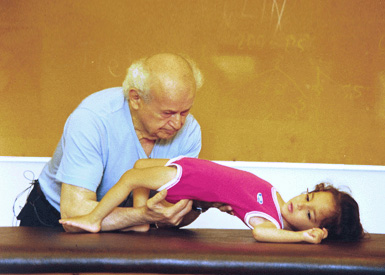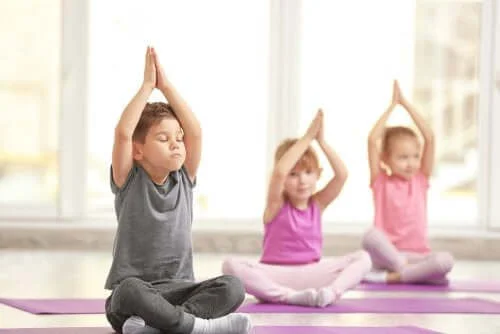The basis of the method is to enable a child with neurological disorders and pathologies of motor development to learn new things. The use of simple and smooth movements helps to restore posture, strength, coordination and elasticity of the body.
If the baby is spastically paralyzed, he does not show a noticeable interest in the world that surrounds him. But in terms of his mental abilities, he is not particularly different from healthy peers. Due to physical pathologies, children with cerebral palsy cannot express their emotions and express desires. They are placed in the strict framework of their body, and society perceives them as incapable of acquiring new knowledge and practical skills.

The Feldenkrais Method is a radically new systematic approach to the rehabilitation of young patients with cerebral palsy. With its help, the resources of the body are activated and bio-impulses release the motor function from existing neurological restrictions. The main goal is to prevent and contain the negative consequences of cerebral palsy for the subsequent development of the child.
Varieties of the method
In practice, two main directions are used:
- ABM. Anat Baniel was a Feldenkrais assistant and developed her own program of work with adult patients. She then adapted theory and practice to work with children with cerebral palsy and autism. ABM practitioners often work in intensive courses that involve a series of 1-2-3 lessons per week. All lessons are designed to meet the individual needs of each individual patient. For 30 years, this method has proven its effectiveness in the rehabilitation of children and improving their quality of life.
- JKA. Jeremy Kraus studied with Feldenkrais and developed his own alternative approach, the key goal of which was to help children with psycho-motor disabilities. The technique is effective when working with cerebral palsy, congenital or acquired spasticity, genetic pathologies, scoliosis, severe injuries, developmental delays.
In the Galileo Rehabilitation Center, two main vectors are used in Feldenkrais classes:
- Independent work. The specialist shows a certain movement, and the child repeats it under strict guidance. Such classes are conducted with patients who understand the requests addressed to them and readily fulfill them.
- Functional integration. Here, the movements of the child are of a forced nature – they are performed by a practitioner who independently moves the legs, head, arms of the patient. As a result, the child begins to understand how actions are performed and learns to feel and understand his body. It becomes easier for him to build algorithms for performing a particular movement.
- Depending on the physiological characteristics of the child, the first or second method, or their harmonious combination, can be used. The tandem of two directions provides maximum efficiency: firstly, it facilitates the exercises for the baby, and secondly, it adds variety to the program.
CHILD’Spaice method
The basis of the methodology is the concept of space for the harmonious development of the child and the pace with which he masters new skills. Classes according to the methodology are built around what the baby already knows and can do. The key task is to improve the movement that is already obtained and bring it to automatism. Child’Space sessions are very individual and never repetitive. There are no standards or strict exercise protocols here.
The author of this method was Hava Shelhav, who was a student of Moshe Feldenkrais and took his author’s method as a basis. In the practice of Child’Space, the emphasis is on expanding the functionality of the body. The method is applicable to any child with neurological diseases and special needs.

Child’Space therapy is part of the rehabilitation programs for cerebral palsy at the Galileo Center. Classes are held individually, 1-2 times a week or in intensive format.
Lesson results
There is no one qualitative result for all patients and never will be. There is a wide range of pathologies, age categories and levels of severity of neurological disorders. However, there are effects that are noted in 99% of cases:
- An increase in the amplitude of movements is noted;
- Improving the motor functions of the body;
- Expands own arsenal of movements;
- Muscles become more sensitive to conscious movements;
- With autism, the baby begins to recognize himself and perceive his body;
- The ability to distribute weight on the limbs and control them during movement improves.
